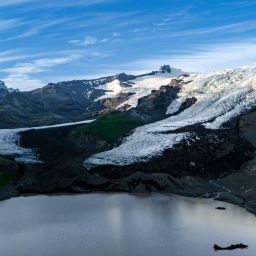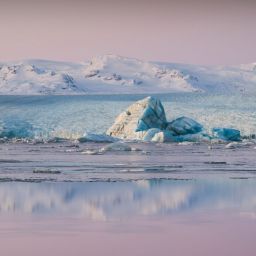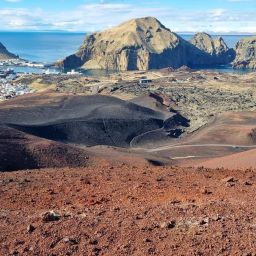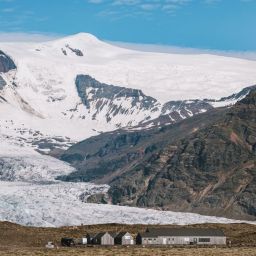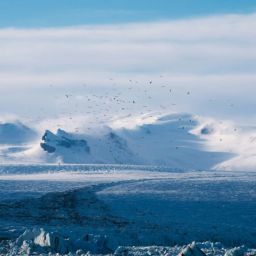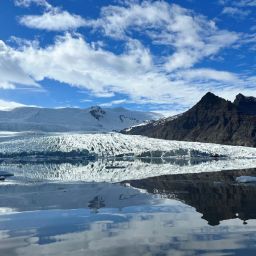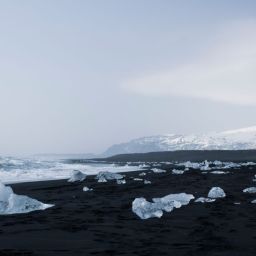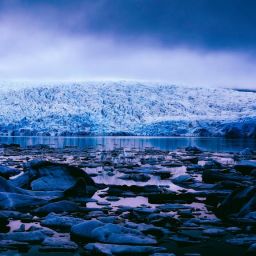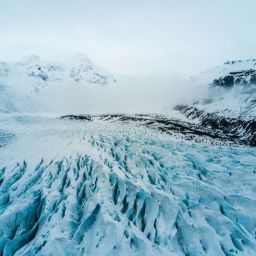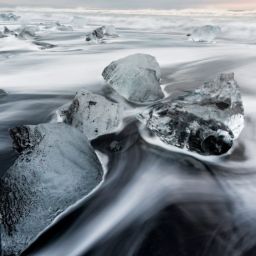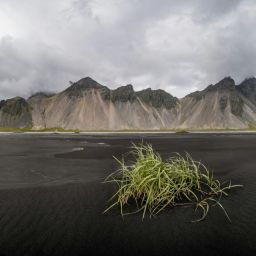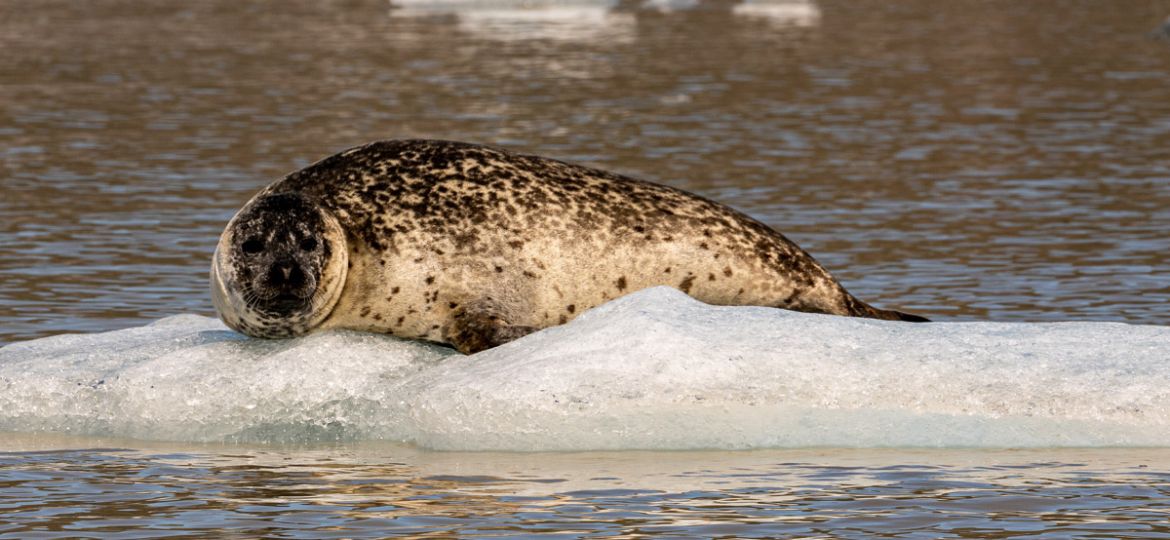
Seals are frequently sighted along Iceland’s coast and you’ll often see them in the south of the country. In this article, we’ll take a look at what kinds of seal you can expect to encounter and suggest some of the places where they are regularly seen. We’ll also explore when you’re most likely to spot them and discuss how to behave in a responsible manner so that these delightful marine mammals can call South Iceland home for many years to come.
What types of seal should you be looking out for?
Iceland’s position just south of the Arctic Circle makes it a popular spot for certain kinds of seal. Four species aren’t resident but visit Icelandic shores: the harp seal, hooded seal, bearded seal and ringed seal. These types of seal are most often spotted in the north and west of the country.
But if you’re travelling along the south coast, you won’t be missing out: you’ll be pleased to learn that two types of seal make their home in Iceland and because of this can be seen throughout the year. Better still, they can be encountered in several parts of South Iceland. These are:
Harbour seals
The most common type you’ll spot anywhere in the country is the harbour seal. They are widely found across the North Atlantic Ocean, North Sea and Baltic Sea, giving rise to their other name – the common seal. These seals are often brown or grey in appearance, though can also have tan or off-white colourings.
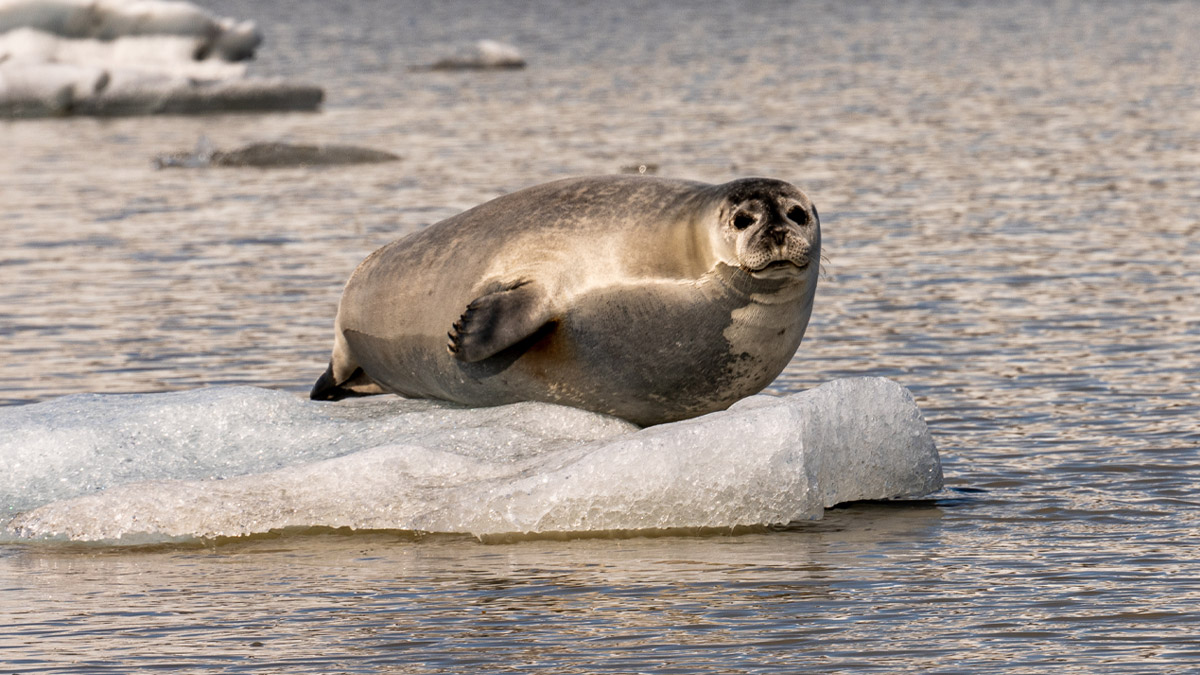
Each individual has a unique pattern of spots. They have relatively short bodies – typically growing to around 1.8 metres or so – and also have rounded heads and V-shaped nostrils. They like to haul out onto rocks, icebergs or sandy beaches, which is why you’ll often encounter them along the Icelandic coast.
Grey seals
The next most common seal you might encounter in Iceland is the grey seal. As the name suggests, adults tend to be grey in colour, though if you’re here when they are raising their young pups you’ll see how white and fluffy the little ones are. Time your visit for autumn to give yourself the best chance as the pups are usually born between September and November.
Perhaps the easiest way to differentiate between an adult grey seal and an adult harbour seal is from its size. Typically, grey seals grow larger and can measure up to three metres in length. If you are able to get close enough to see their faces without disturbing them, you’ll also see that their nostrils are parallel and their heads aren’t quite as rounded.
Where to spot seals in South Iceland
As with any wildlife, there are no guarantees, but there are a number of places along Iceland’s south coast where seals are frequently spotted. Let’s take a look at some of the spots where you might go:
Fjallsárlón
Seals are often seen hauled out onto larger icebergs in Fjallsárlón. As you take a boat trip out onto the lagoon, you’ll often have the opportunity to see them at relatively close quarters as they lounge around on the flatter sections of the ice.
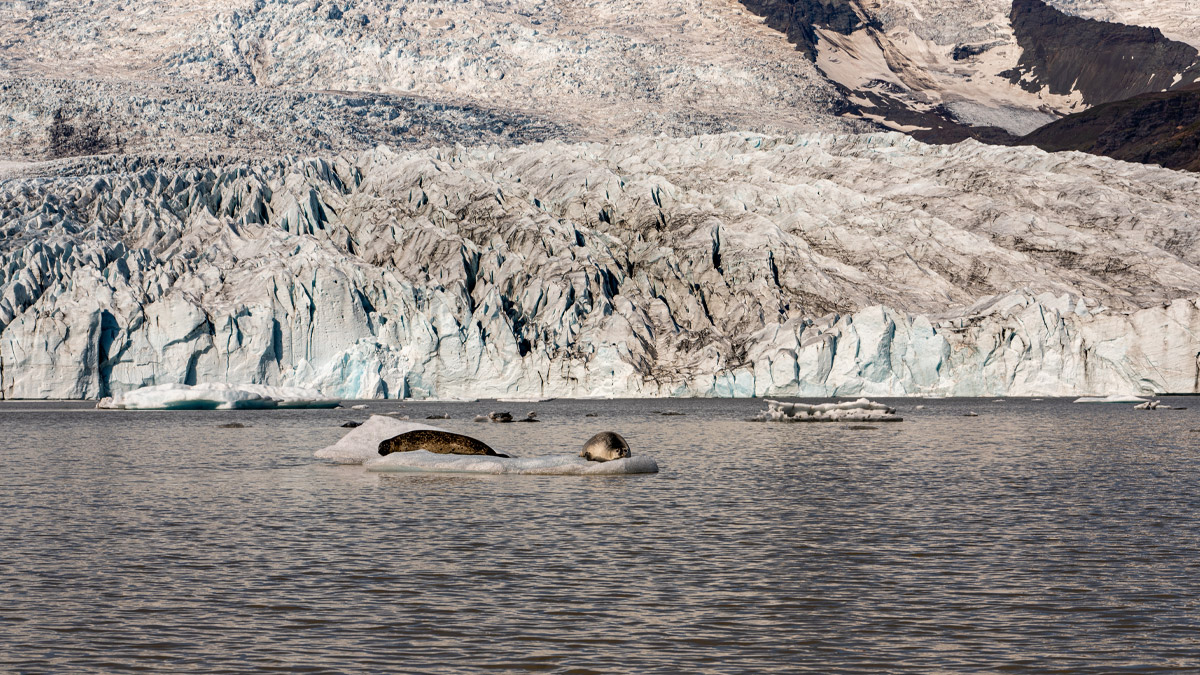
Jökulsárlón Glacier Lagoon
Similarly, seals are also sighted on a regular basis at neighbouring Jökulsárlón. As at Fjallsárlón, you might see them at a distance from the shore but you’ll be able to get nearer to them from out on the water.
Fellsfjara
Occasionally, you’ll also witness seals on the black sand at Fellsfjara, better known as Diamond Beach. The icebergs that litter the beach are reason in themselves to stop for a walk, but the chance to watch seals is an added bonus.
Surtsey Island
Surtsey’s status as a protected area means that seals are attracted here. Grey seals come to the island to breed, though harbour seals have tended to prefer nearby river locations such as Ölfusá, Thjórsá, Markarfljót and Kúdafljót.
The Þjórsá River
The Þjórsá is Iceland’s second longest river and also second largest by volume. Its abundant stock of fish means that seals are sighted in the water, particularly in the Þjórsá’s lower course near to the ocean where they can be assured of a tasty meal.
Should you visit a seal beach at low or high tide?
Seals often haul out on islands and islets at low tide. To maximise your chance of seeing them if you plan to hang out in a tidal location, take a look at the tide timetable and try to visit within an hour or two of the lowest water level. Once the tide starts to come in, be vigilant of its position and speed because you don’t want to find yourself stranded. It’s easy to become engrossed in seal behaviour, so if you think you’ll forget about your surroundings, set your phone’s alarm and pop it in your pocket. When it vibrates, it’s time to leave.
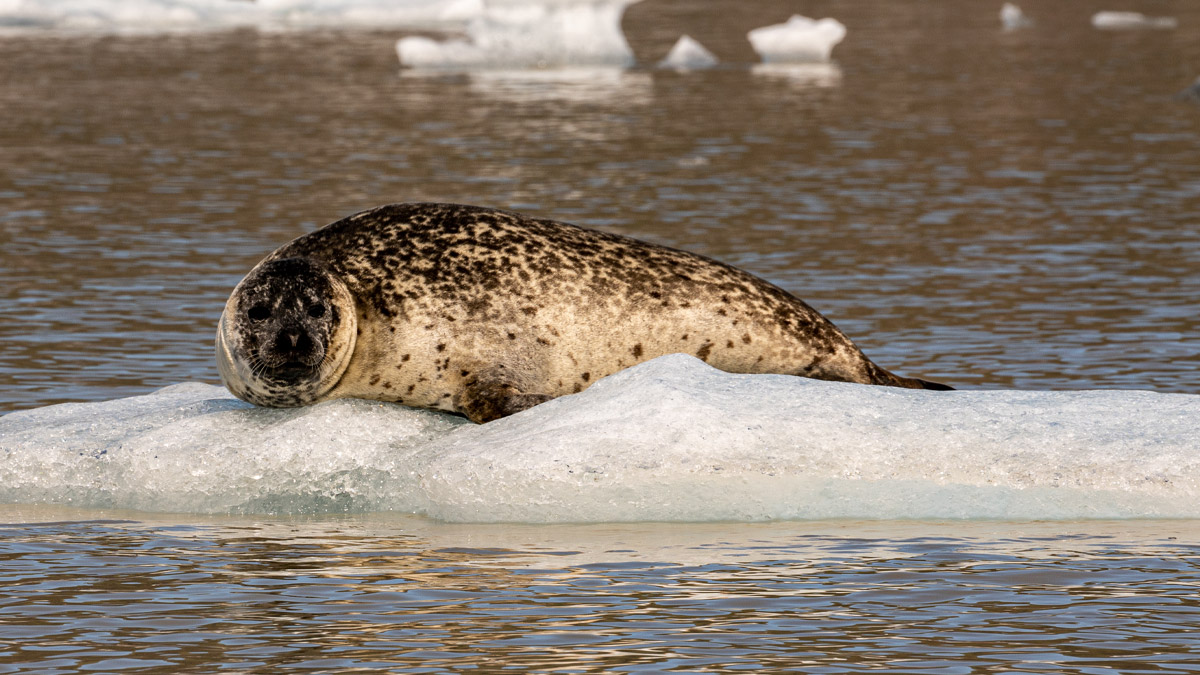
Responsible seal watching behaviour
In our haste to grab a photo, we can sometimes forget that the most rewarding encounters with wildlife of any kind are those where they are displaying natural behaviours. If you’re lucky enough to find yourself in the vicinity of South Iceland’s seals, there are a number of things you can do to ensure you behave responsibly and avoid unnecessary disturbance.
• On land, try to ensure you remain at least 50 metres away from seals. Double that if you arrive during pupping or weaning season. Keep any movements slow and steady to avoid startling them.
• During encounters on foot, remain on the land side of where the seals are and never walk out behind them on a beach. That’s so that they can leave the area via the water if and when they wish.
• Know that when a pup has been left alone, it doesn’t usually mean that it has been abandoned. It’s far more likely that the parent has gone to find food and will return.
• If you’re on a boat trip and seals swim close to the boat, enjoy the moment but don’t ask the guide to linger – responsible tours will never stay too long in the company of a seal.
• Resist the temptation to lean out of a boat or throw an object into the water. It’s also essential that you don’t put your hand in the water. Seals are naturally curious but cute as they seem, remember they are wild animals that can bite.
• Stay calm and quiet in the presence of wildlife such as seals; try not to raise your voice or make wild gestures to try to get someone’s attention.
• If there are a lot of people present and it’s possible to do so, spread out so that the seals aren’t crowded or wait until some visitors have gone before stepping up.
• Remain alert to where the seals are and what they are doing. If you sense that your presence is creating a stressful environment for the seals, leave immediately as their welfare is more important than your sightseeing.
• If you’re keen to photograph seals in their natural habitat, carry a camera with a long lens so that you can use the zoom facility. Never be tempted to use a flash to illuminate them in low light conditions.
If you’re lucky enough to have a seal encounter during your trip to Fjallsárlón or other places in South Iceland it’s certain to become a treasured memory. Enjoy it but remember you’re a visitor and this is their home. Make sure you leave their environment in a pristine condition so that they can continue to thrive.


